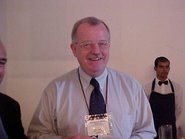 How can communication bridge the gap between local communities and the government after it has launched top down a protected area? This is the issue addressed by a Ungandan student.My comments were the following:
How can communication bridge the gap between local communities and the government after it has launched top down a protected area? This is the issue addressed by a Ungandan student.My comments were the following:Good: You describe the real life case of the Commonwealth Lake Reserve. There seems to have been no concern how to guide the transition by the local communities from fishing to tourism. This is a process that needs some degree of participation in the planning and implementation. In your plan you try to repair this omission by formulating a communication plan.
To improve: A next time you should think more deeply whether education and communication alone could repair the damage done so far and convince the communities the PA is good for them. People believe what they see, not what they hear. Or action of the government or the PA speaks louder than words. The objectives of the education program and communication program you should formulate much more in a SMART way. Remember an objective is only an objective when it contains a result. So do not start the formulation of an objective with a verb. As to the content of the objectives – they seem to be more management objectives than communication objectives. The latter are always focused on knowledge, attitudes and actions or practices (KAP). The meetings you envisage can be more strategically planned when you first formulate objectives for each meeting: what should participants know, feel and do after the meeting. You list a range of other communication means but you do not specify what and how the add value to the rest of the communication plan.









No comments:
Post a Comment